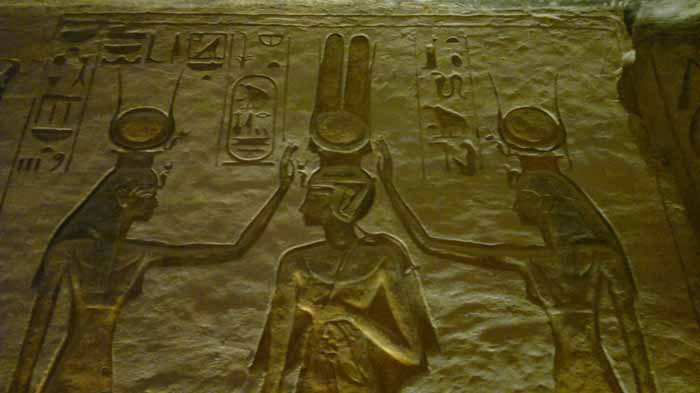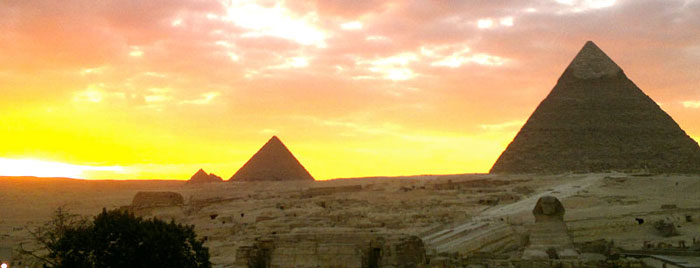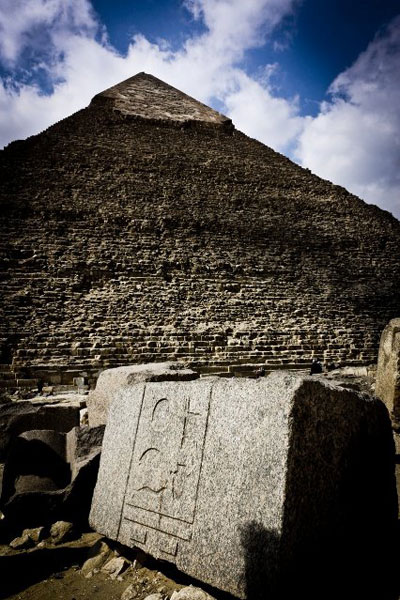This is the first in a series of short articles highlighting the approach I use when visiting ancient sites. I regularly organize and co-host tours to many of the ancient sites listed on GrahamHancock.com. During my tours I have observed the different ways people interact with sacred space. On one hand we have mainstream tours with guides reciting dates and names over a microphone while the tour members wear headsets. At the other end of the spectrum we have people visiting ancient and sacred sites to meditate. After witnessing these different ways of interacting, I felt compelled to share the techniques I use. I hope my insights will help others to maximize their time on location.

Ancient ritual
Anyone that has visited a museum or studied books on ancient cultures will no doubt have run into two labels “ancient ritual” and “ceremonial purposes”, these labels among others are used to explain in very broad terms what archeologists believe our ancestors were up to.
The purpose of many ancient rituals and ceremonies in my opinion is to act as a mechanism to move beyond our normal waking level of consciousness into the intuitive space, a place of deep inner knowing. Today our challenge is to move beyond the rational logical mind we use for most of our every day tasks. People who meditate understand there is something beyond this rational perspective. Many of us have learned to only identify with the rational state of mind and so it has become our default lens for viewing the world. However, it is not the only lens at our disposal to view the world through, by learning to meditate we can start to awaken our intuition and innate inner knowing. In truth it is not my place to convince anyone this is possible, I simply say, why not give it a try? Perhaps, as I have, you will unlock a whole new internal landscape, one that brings you some inner peace and serenity. This is the strength of meditation and the reason the practice has lasted for 1000’s of years, no matter the time period these ancient techniques can help the human body and mind to relax, the practice is as relevant today as it ever has been!
For our purpose of visiting ancient sites, modern day ritual can act as a facilitator for changes in the balance of activity in the hemispheres of the brain, changes that can lead to deep meditative states of mind. Here is a quote from the UCLA Mindful Awareness Research Center about the latest scientific findings on meditation.
“In the last ten years, significant research has shown mindfulness to address health issues such as lower blood pressure and boost the immune system; increase attention and focus, including aid those suffering from ADHD; help with difficult mental states such as anxiety and depression, fostering well-being and less emotional reactivity; and thicken the brain in areas in charge of decision making, emotional flexibility, and empathy.”
Above quote taken from http://marc.ucla.edu/default.cfm
Science can measure changes inside of us but it can’t tell us what we should be feeling or experiencing. To understand this we need to be in the present moment and aware of what’s happening to us, if we combine the technique of meditation with a visit to a powerful ancient site, it’s possible to achieve deep insights.
My advice is to follow the tenants of ceremony or ritual to allow yourself time to transition from your normal state of mind into the intuitive space, for some this may happen very quickly, for others this may take longer, the important point to remember is, it’s a process. Experiment with different techniques to find the right one for you.

How and why to meditate at ancient sites
Why: In the Buddhist tradition Vipassanā meditation means “insight into the true nature of reality”. The practice of mindfulness and meditation helps to root our awareness in the present moment, we separate ourselves from our current stresses and problems, relationship issues and other thoughts that play on our minds. By being present we can get a sense of freedom and peace, which is very liberating. This feeling can also lead to a sense of gratitude and serenity.
How: Taking control of our breathing from the autonomous nervous system is a good way to bring our busy mind under control. If needed, we can recite a mantra to stop the flow of everyday thoughts. A simple mantra would be, I am breathing in, I know I am breathing in, I am breathing out, I know I am breathing out. Take long deep breaths while repeating this mantra. With practice you can extend the length of your breath by breathing more deeply into the bottom of your lungs.
When: The best time to visit an ancient site is in the early morning or evening. Sunrise and sunset are the most powerful times of day because they are the times the electromagnetic field of the sun sweeps across the surface of the planet.
Where: Try to find an ancient site that still has its “sense of place”. Look out for reconstruction. Is the site close to its original condition? Is the site in use by local people? A good sign in Ireland and around the world can be ribbons tied into trees. These often mark powerful locations for meditation.
More information: For further articles in this series, ancient site tour news, conferences and podcasts, please visit http://infinite-connections.co.uk/. Our next tour to Egypt is at the end of March 2014.

About the author: Gary Evans
Gary Evans has been investigating earth mysteries for more than twenty years. From studying sound acoustics inside the Great Pyramid to exploring Moray, an ancient site high up in the Andes mountains of Peru, his work has taken him to some of the world’s most fascinating and mysterious places. When not exploring, Gary helps to promote greater awareness of ancient mysteries by working as a PR agent for a number of best-selling alternative science authors. Since 2010, he has been coordinating and leading tours to Egypt, Malta, Ireland, England, Scotland, India, Peru, and Bolivia. Gary also works to promote conferences in the US and Europe such as CPAK, Awake and Aware, Megalithomania, Paradigm Symposium, and the Eternal Knowledge Festival. Gary recorded an interview with Red Ice Creatons, this can provide an overview of his interests, he also discusses a number of experiences from his tours to ancient sites http://www.redicecreations.com/radio3fourteen/2012/R314-120711.php




